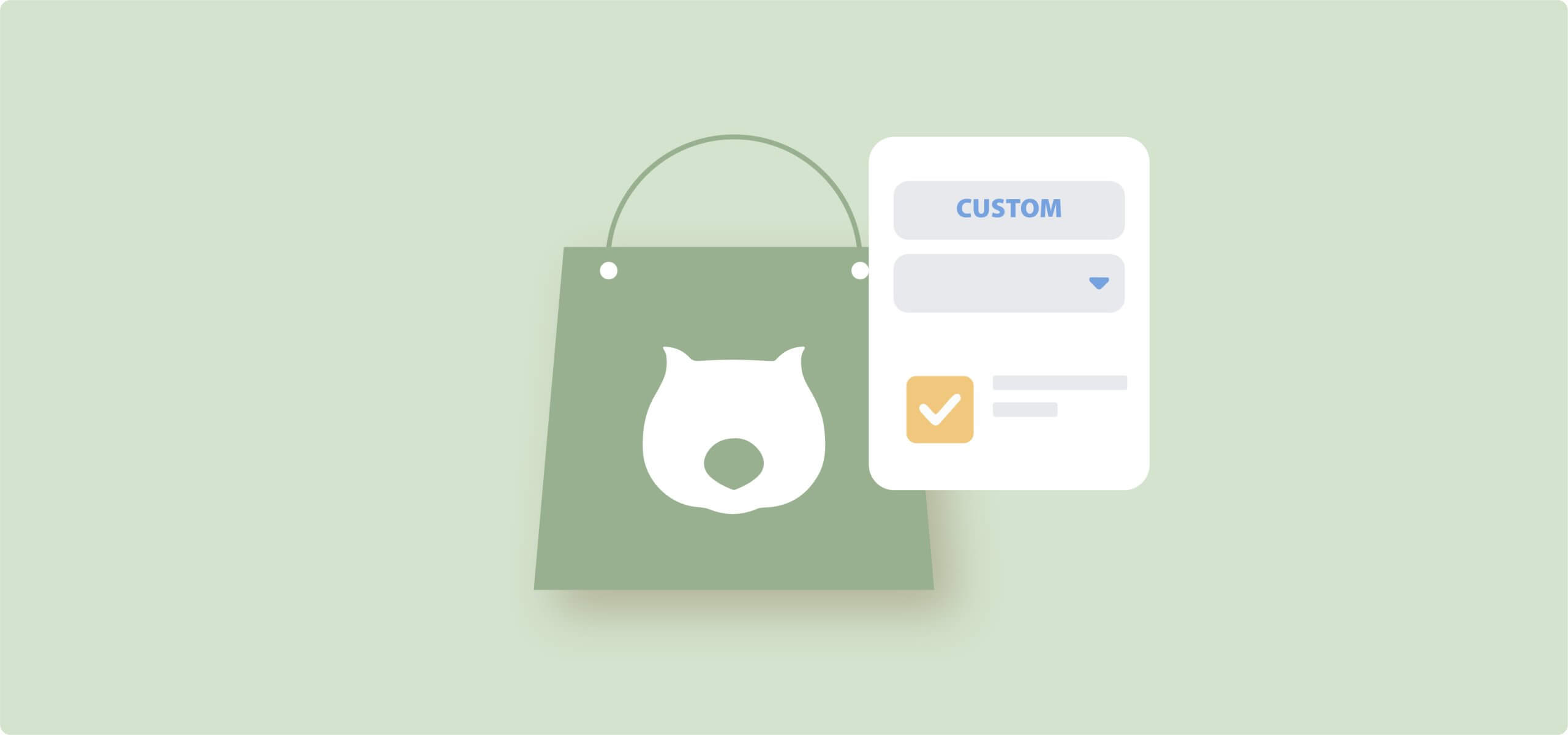Have you ever watched your WooCommerce admin panel freeze while trying to save a product with 1000+ variants? If yes, we feel your pain.
Like most store owners, you’ve probably hit this same architectural trap: You want to offer customizable products, but WooCommerce’s default variation system creates an impossible database explosion. A simple gift box with 10 items, 3 size options, and 5 color choices suddenly generates 150 variations to manage. Add a few more options, and you’re staring at thousands of database entries for what should be one product.
That’s because WooCommerce’s core system wasn’t designed for complex product configurations. It treats every possible combination as a separate inventory item, even when that makes no practical sense.
Thankfully, with Advanced Product Fields, you can offer customizable products without destroying your store database. So stick with us in this guide, and we’ll help you build a solution that actually works.
What is a composite product in WooCommerce?
A composite product in WooCommerce combines multiple individual products with separate SKUs into one configurable package, where each component maintains its own inventory tracking. When a customer purchases the composite, the system automatically reduces stock for every selected component.
Think of a custom PC builder where the customer selects:
- Intel Core i7 processor (SKU: CPU-001, Stock: 25 units)
- 32GB RAM kit (SKU: RAM-032, Stock: 40 units)
- NVIDIA RTX 4070 (SKU: GPU-4070, Stock: 12 units)
When they complete the purchase, WooCommerce depletes inventory for all 3 components individually. The processor drops to 24 units, RAM to 39 units, and the graphics card to 11 units.
Each part exists as its own product in your catalog, and customers can buy them separately or as part of the composite. The system tracks everything independently, preventing you from selling a custom PC when you’re out of graphics cards.
Understanding different WooCommerce product types
Before diving into composite products, you need to understand how WooCommerce handles different product configurations. Each type serves a specific purpose, and choosing the wrong one creates unnecessary complexity.
What is a customizable product?
A customizable product is a single item with user-added personalization options that don’t affect core inventory. The base product remains the same SKU regardless of what customization choices customers make.
Picture a T-shirt with custom text printing. Your inventory tracks 50 blank shirts, not infinite variations of prints saying “Happy Birthday, Sarah” or “World’s Best Dad.” When someone orders a unit with their chosen text, your stock decreases by one blank T-shirt. The custom message gets stored as order metadata.
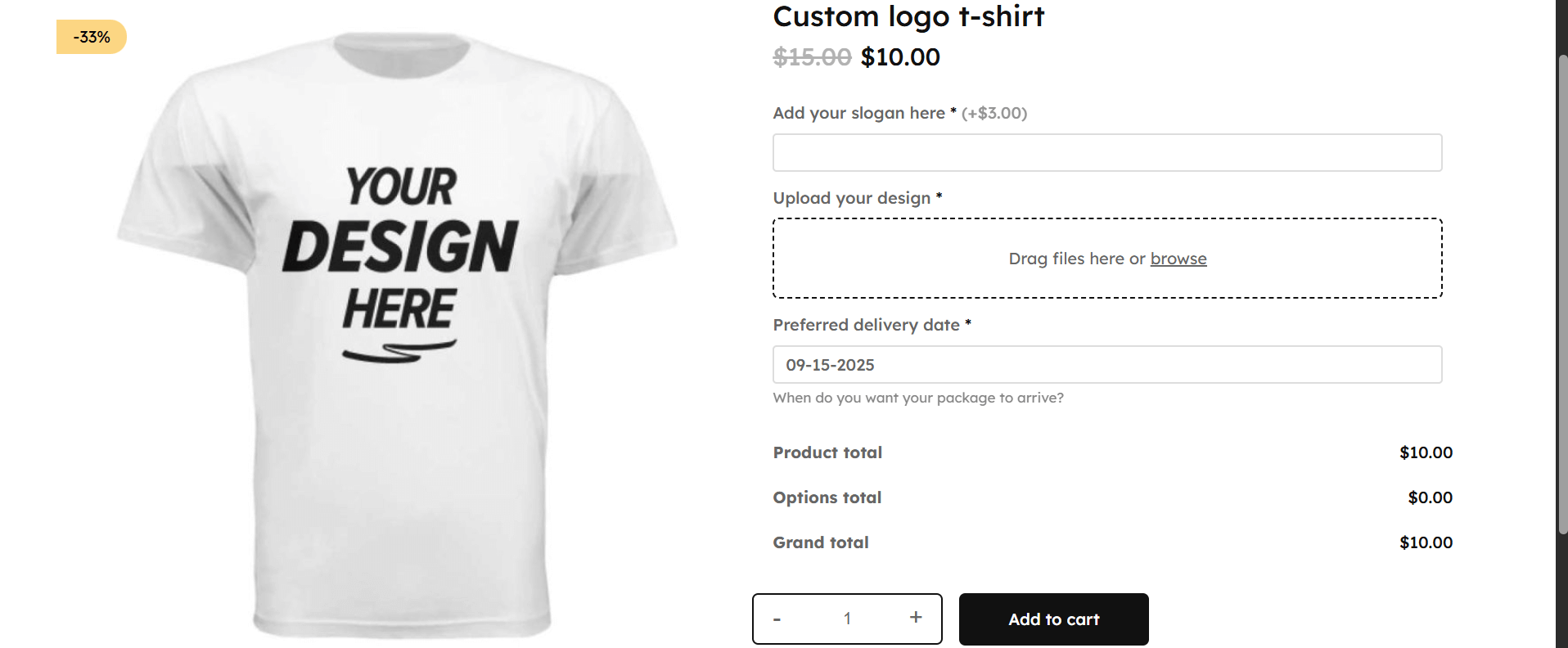
The same principle applies to engraved jewelry. Whether the customer wants “Forever Yours” or their initials engraved, you’re still selling the same silver bracelet from your inventory.
What is a variable product?
Variable products offer predefined variations based on attributes like size, color, or material. Each variation can have its own SKU, price, and stock level, but they’re all versions of the same parent product.
Clothing is a good example of a variable product, as it is generally offered in different sizes:
- Sizes for kids: 4, 5-6, 6-7, etc.
- Colors: pink, yellow, blue
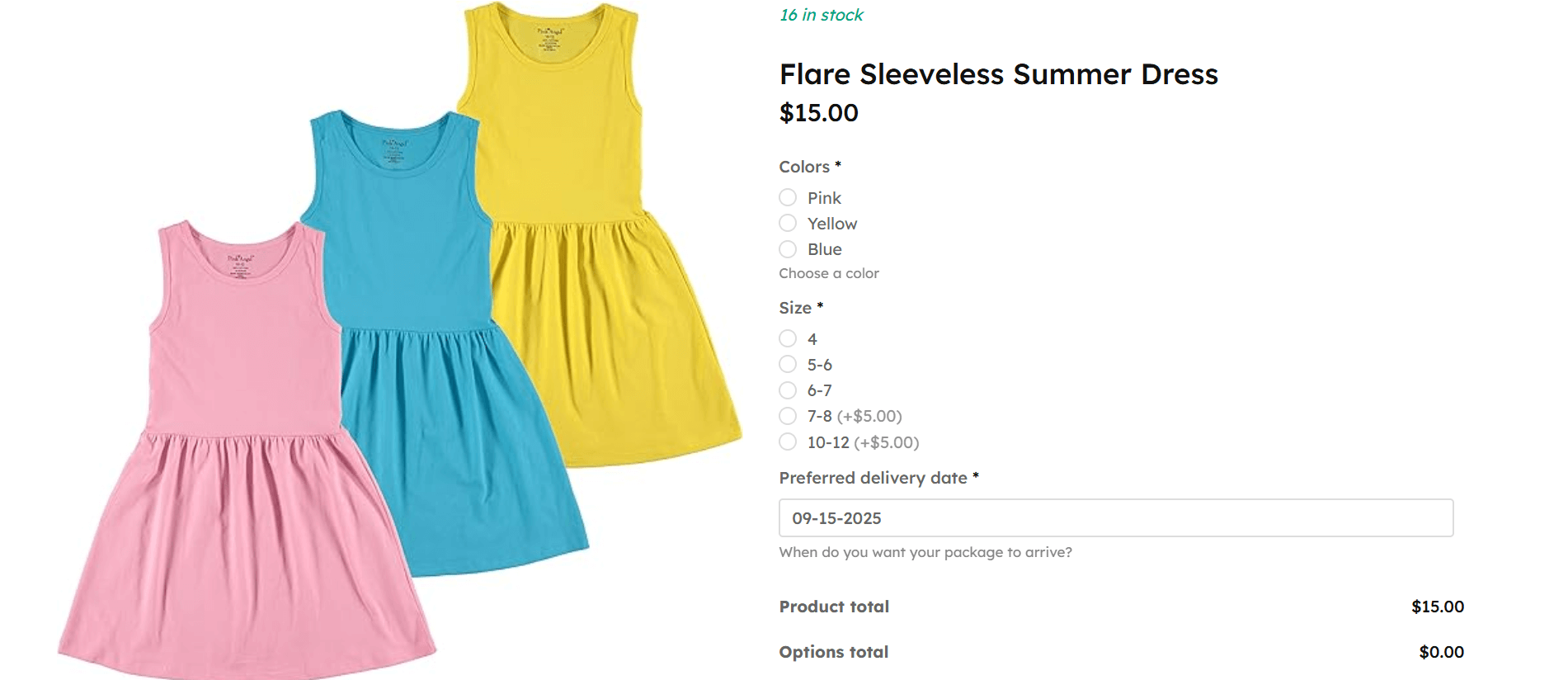
This creates 15 distinct variations. Each one gets managed separately in your inventory. When someone buys a size 4 yellow dress, only that specific variation’s stock decreases.
What is a fixed bundle product?
Fixed bundles, also known as chained products, are pre-configured collections sold as one unit. The customer can’t swap components.
For instance, you might have a wine gift basket that always contains:
- 2019 Cabernet Sauvignon
- Aged Gouda cheese
- Artisan crackers
When sold, only the bundle inventory decreases. The individual wine, cheese, and crackers don’t have their stock adjusted. You’re tracking “Holiday Gift Basket” as a complete unit, not its parts.
What is a mix-and-match bundle?
Mix-and-match bundles allow customers to select a set number of items from available categories. “Build Your Own Gift Box – Pick 3 items” offers shoppers flexibility while maintaining a structured approach.
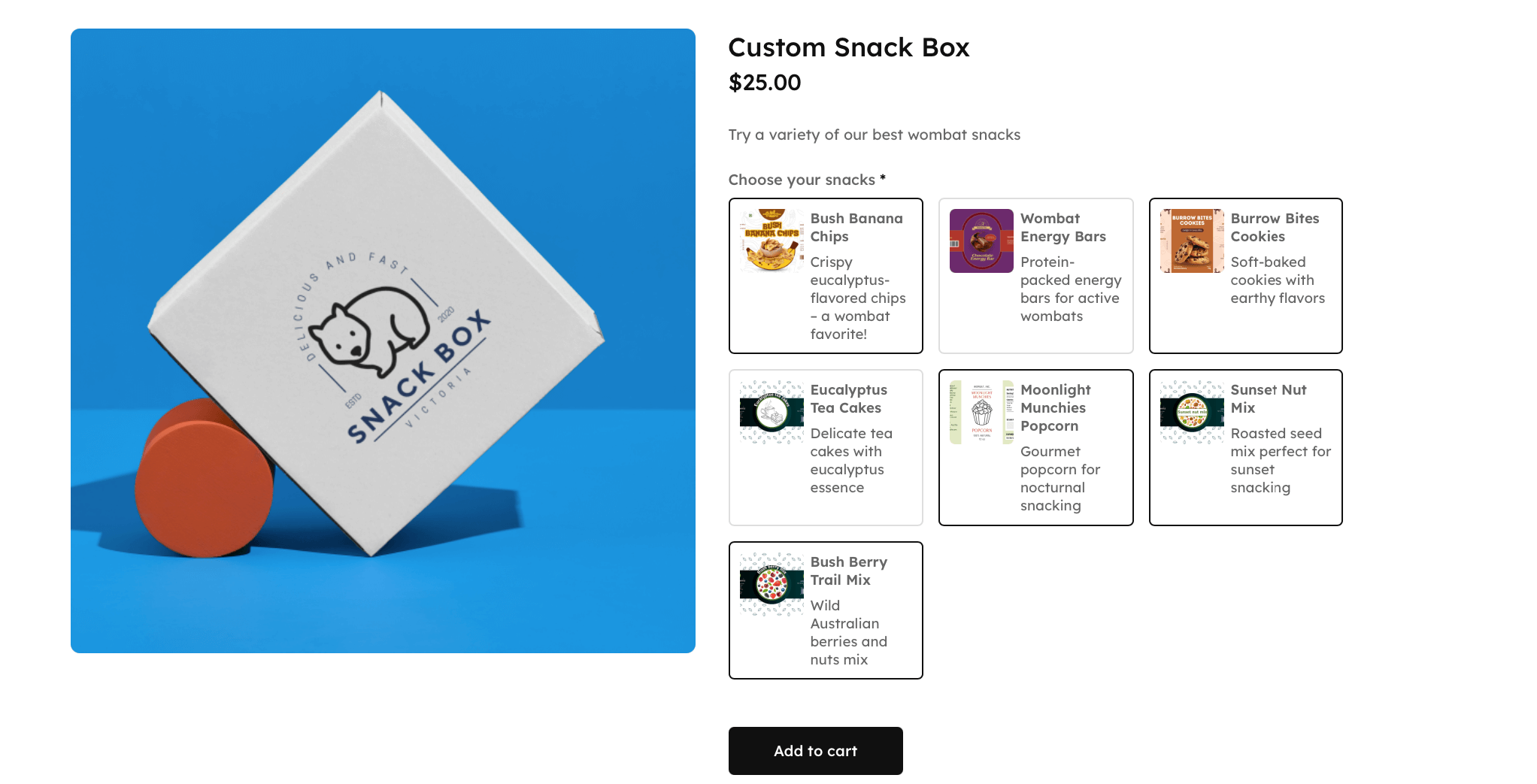
Generally, you would track mix-and-match bundles as composite products because you’re giving customers the option to choose their own products. That means each item will have its stock reduced when included in a bundle.
Key architectural differences
| Aspect | Composite products | Customizable products |
|---|---|---|
| Inventory impact | Each component decreases its own stock | Only base product stock decreases |
| Database structure | Multiple child products linked to parent | Single product with metadata |
| SKU management | Every component has its own SKU | One SKU for the base product |
| Pricing model | Sum of selected component prices | Base price plus optional upcharges |
| Order data | Components appear as separate line items | Customizations stored in order notes |
Why inventory tracking matters
Composite products track inventory by monitoring each component’s stock level independently. When a customer orders a custom build, WooCommerce automatically reduces inventory for every selected component in real time, preventing overselling across all product configurations.
Component-level inventory benefits
- Prevents overselling individual components: You can’t sell a custom PC with an RTX 4090 if you’re out of stock, even when plenty of other components are available.
- Enables accurate reporting on component popularity: Discover that 80% of builds use mid-tier graphics cards, not the premium options you’ve been stocking heavily.
- Supports multi-location shipping scenarios: Ship motherboards from your East Coast facility while cases come from the West Coast warehouse.
- Facilitates separate component purchasing: Customers buy that popular graphics card alone or as part of a complete system from one inventory pool.
Keep in mind, not every product needs component tracking. For example, if you’ve got pre-built computers you assemble in-house, it’s better to track them as complete units. You’re not selling the parts separately, so why complicate inventory?
Which product setup is best for you?
Ask yourself these 3 questions:
- Do you sell components separately? If yes, you need composite products. A computer store selling individual CPUs requires different tracking than a cake shop with toppings.
- Do components ship from different locations? Multiple warehouses or suppliers mean composite products. Single location? Customizable products work fine.
- Do you need component-level sales reporting? Want to see “50 Intel i7 processors sold this month”? Choose composite. Only need “25 custom PCs sold”? Customizable is enough.
How Advanced Product Fields solves product configuration challenges
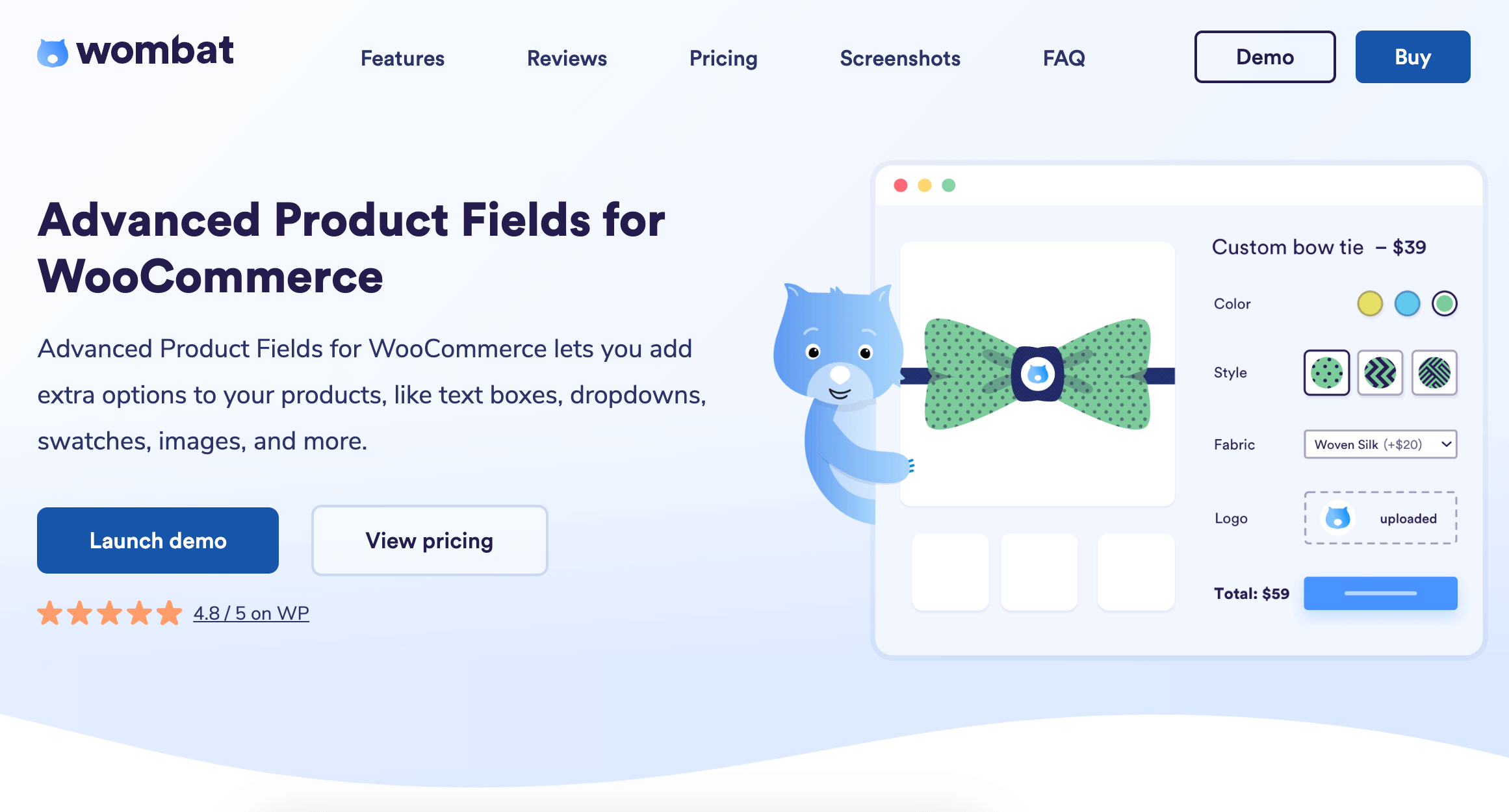
Now that you understand the difference between composite and customizable products, here’s the solution that handles both without forcing you to choose: Advanced Product Fields for WooCommerce.
Dual capability advantage
Advanced Product Fields eliminates the either/or dilemma most plugins create.
The Extended version handles true composite products through its products field, letting customers select from your existing catalog with full inventory tracking. Each selected component maintains its own SKU and stock level.
Additionally, it manages customizable products through 18+ field types – text inputs, file uploads, color swatches, date pickers, and more. These fields add personalization without creating inventory complications.
You can even combine both approaches in a single product.
Imagine a custom gift box where customers:
- Select individual products (composite functionality with inventory tracking)
- Add a personalized message (customizable field without inventory impact)
- Choose gift wrap color (simple option field)
Key features for composite products
- Links to separate products with individual SKUs: Pull any simple or variable product from your catalog as a selectable component.
- Tracks inventory accordingly: When customers select products, their individual stock levels update at checkout.
- Component pricing integration: Display actual product prices or offer certain components free as promotions.
- Formula pricing for complex calculations: Create dynamic pricing based on selections, quantities, or custom measurements.
Variable product integration advantage
Here’s where Advanced Product Fields shines compared to traditional composite plugins.
When you add a variable product as a component, the Extended version automatically displays each variation as a separate option. Your “T-Shirt” product with 9 size/color combinations appears as 9 individual choices for customers.
Just remember that each variation must have its own SKU for inventory tracking to work correctly. No SKU means no stock management.
Setting up composite products with Advanced Product Fields
Creating composite products requires the APF Extended bundle for access to the products field. Let’s walk through the setup process.
Configuration walkthrough
Here’s how to build your composite product. We’ll use a bundle beauty box as our base product:
- Click on “Custom fields” under “Product data”.
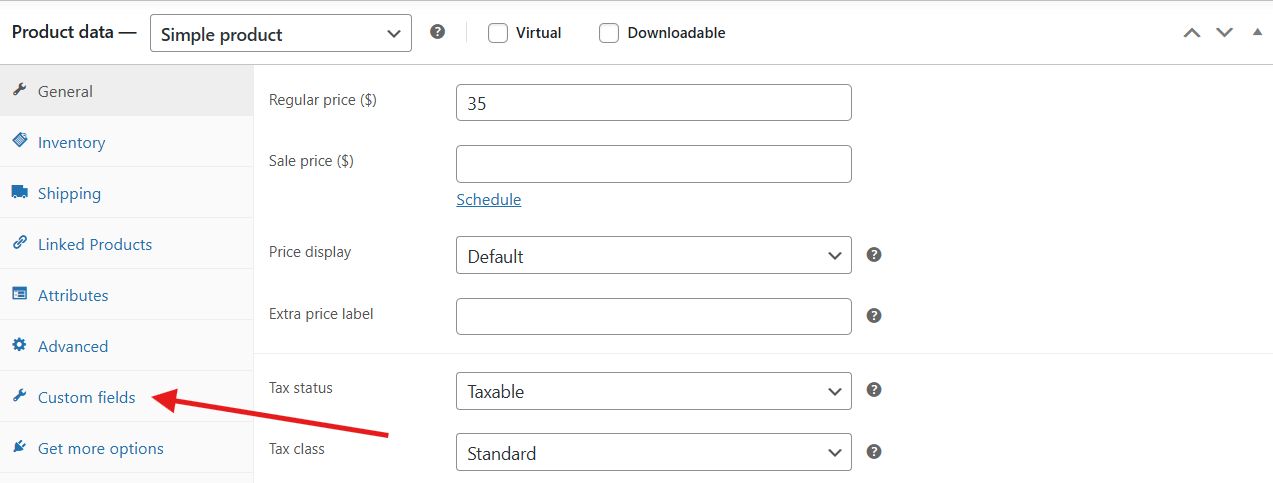
- Next, click “Add your first field”.
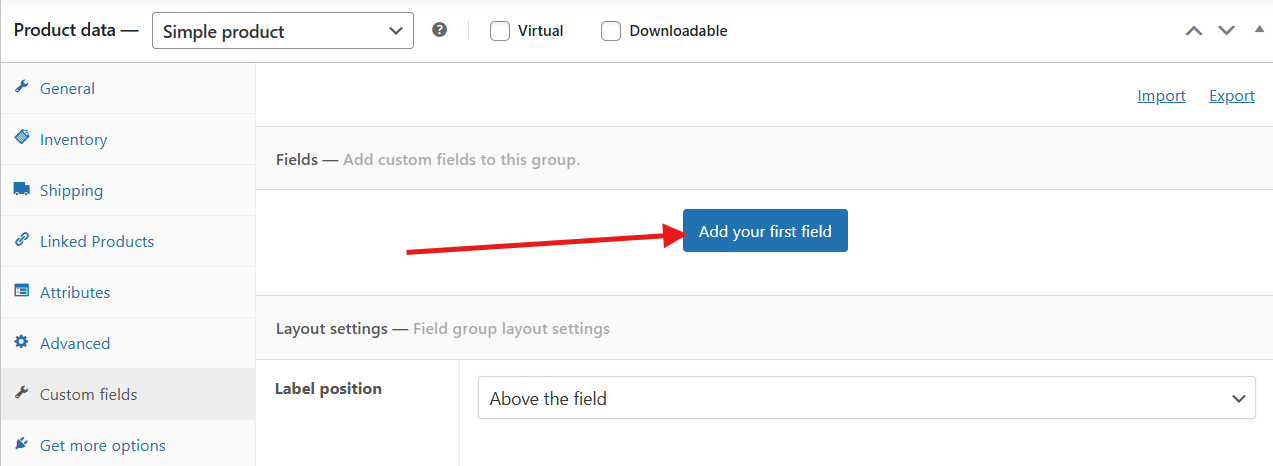
- Now choose “Type” and then “Products” under the advanced field in the drop-down menu.
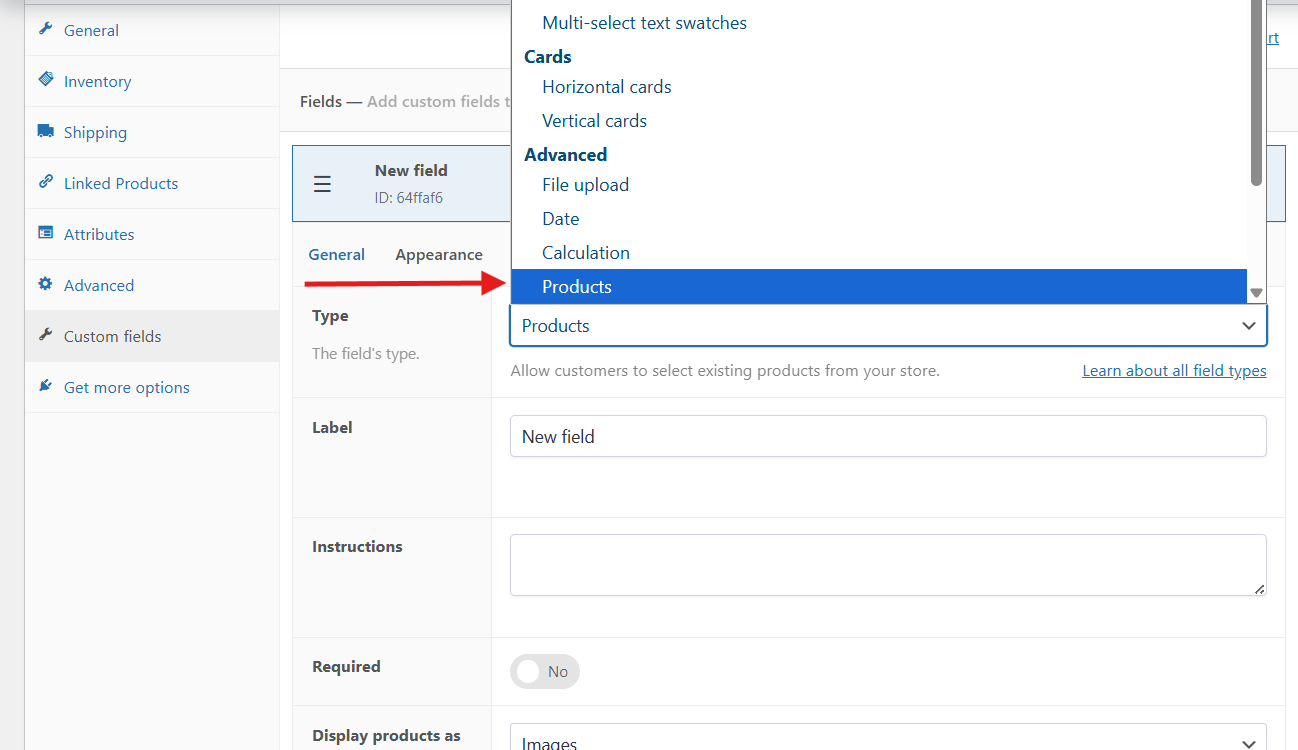
- Scroll down to “Included products” and then search for the product you’d like to provide as an option for the box.
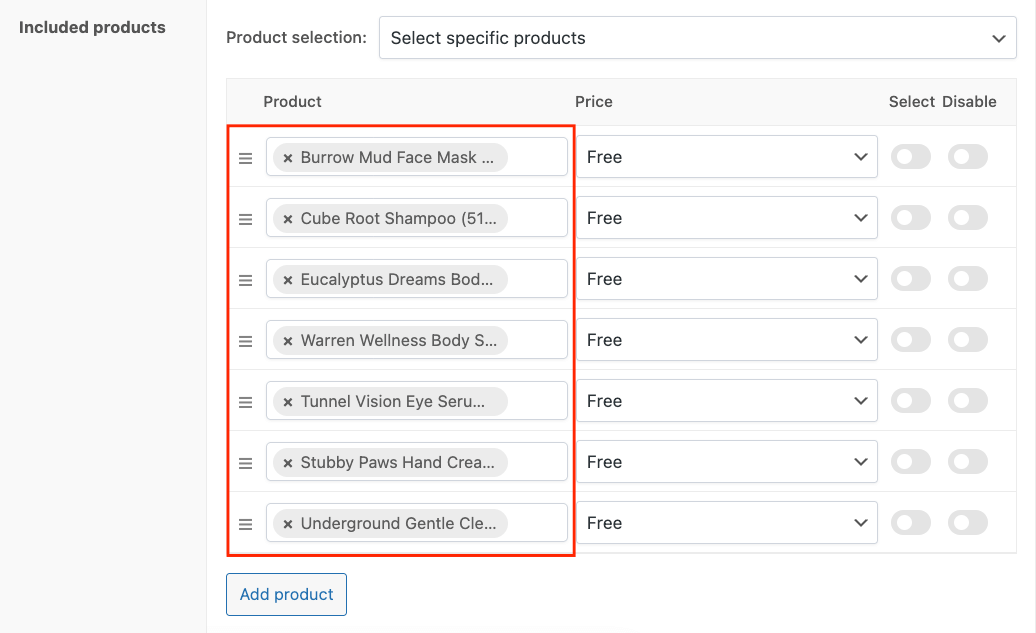
This is essentially a pick-and-mix product box. You simply add each component as its own conditional field. So if you wanted to provide 6 options, you would make 6 fields.
Want to make this a subscription box? Check out our tutorial on recurring orders!
Conditional logic and dependency configurations
If you want to really personalize the experience for your customers, you’ll need to use conditional logic to amp up your fields.
Smart conditional logic offers a more personalized experience that adapts to each customer’s preferences.
Conditional display controls which options appear based on previous selections:
- Show/hide fields based on previous selections: Display warranty options only after selecting a high-value component.
- Create guided configuration paths: Walk customers through complex builds step by step.
Instead of showing 50 fields at once, you reveal relevant options progressively.
Conditional logic setup
Conditional logic is easy to set up. Let’s say you want to set up a gift message option for a beauty box. But you only want to provide that option once a customer classifies it as a gift. That’ll look something like this:
- Add a new field and select “True/False”.
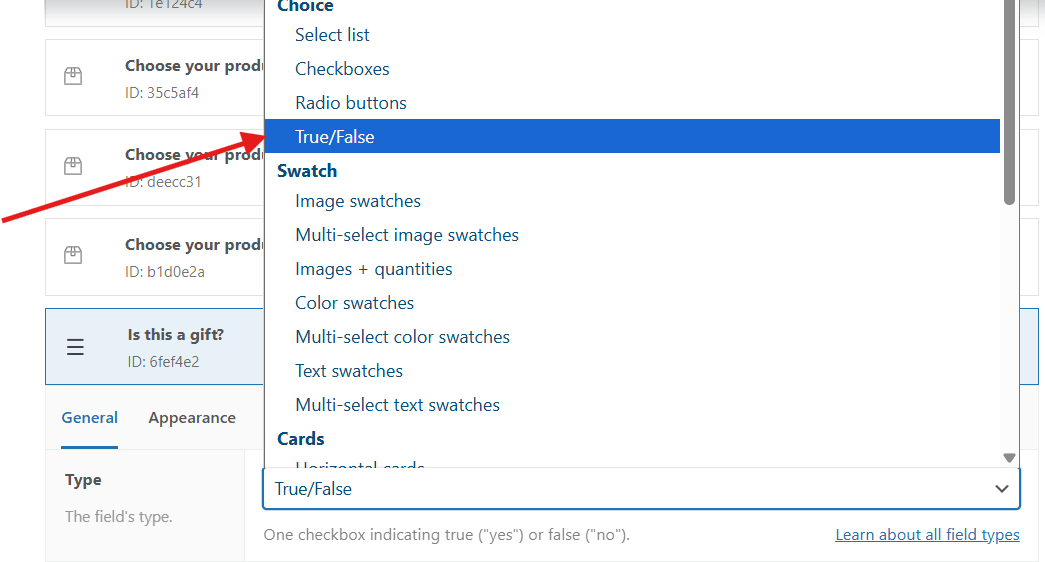
- Label your field.
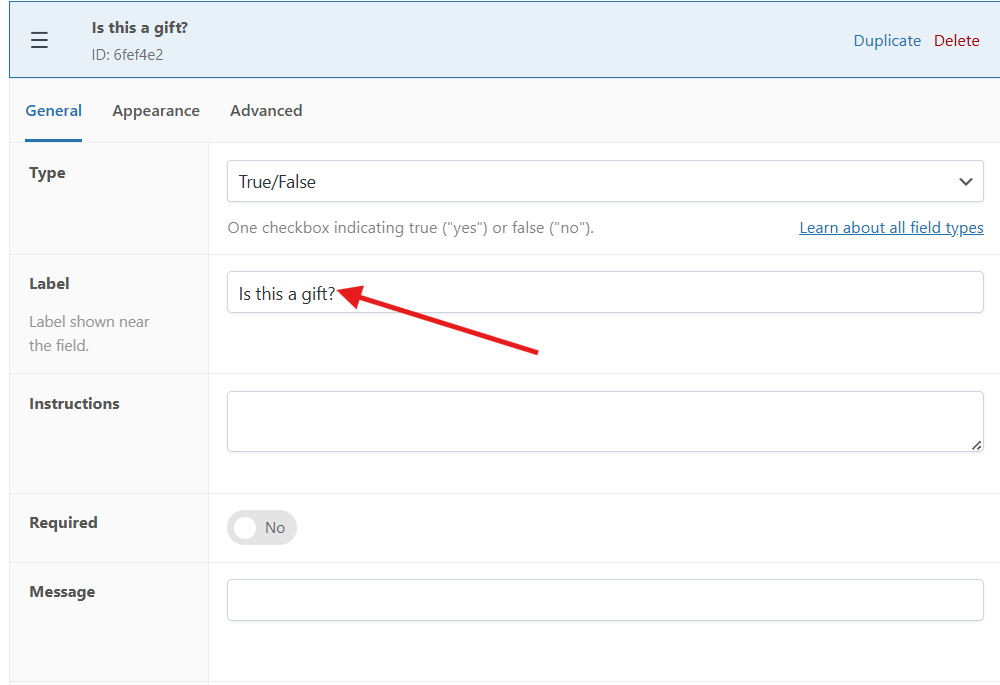
- Next, add another new field as a text box and click on “Advanced”.
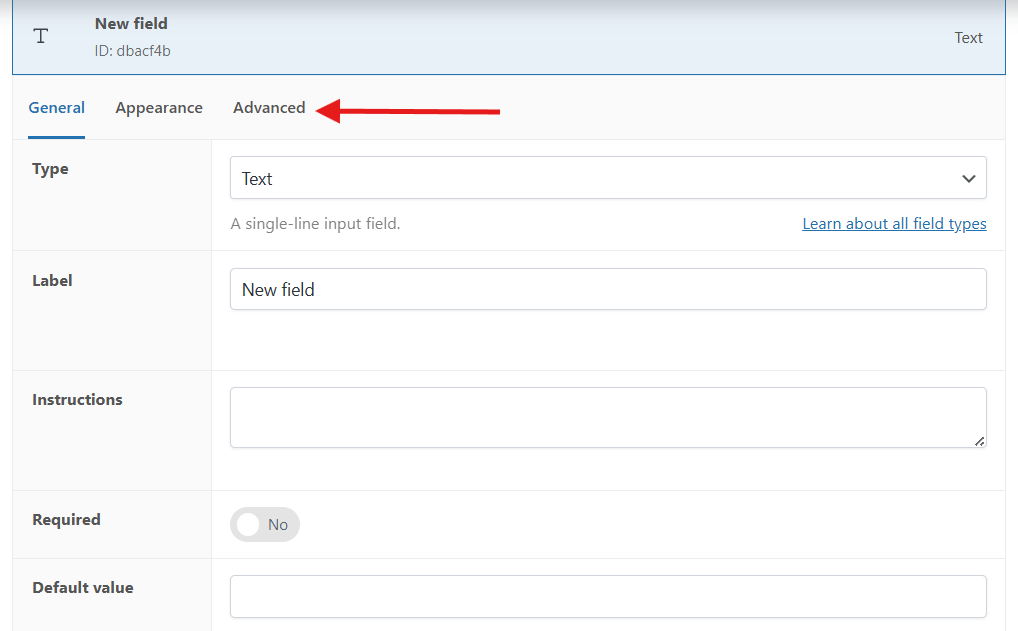
- Under “Conditional logic”, click “Add new rule group”.
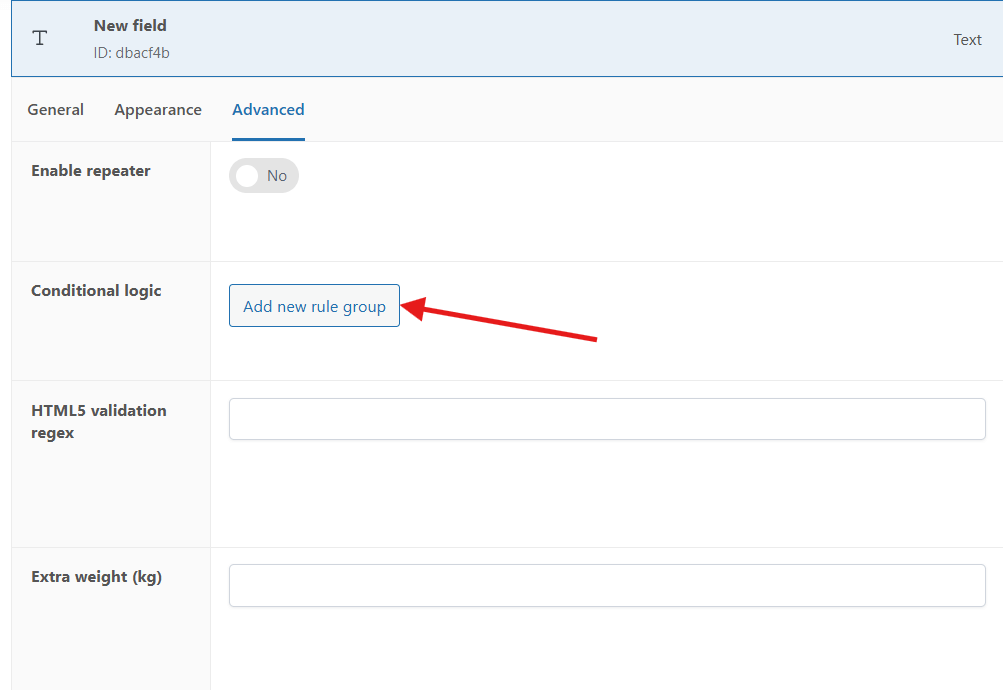
- Now, choose the “True/false” field you made before (“is checked” should be chosen by default).

Now, if you’ve done everything correctly, your message box should only appear once your gift box is checked:
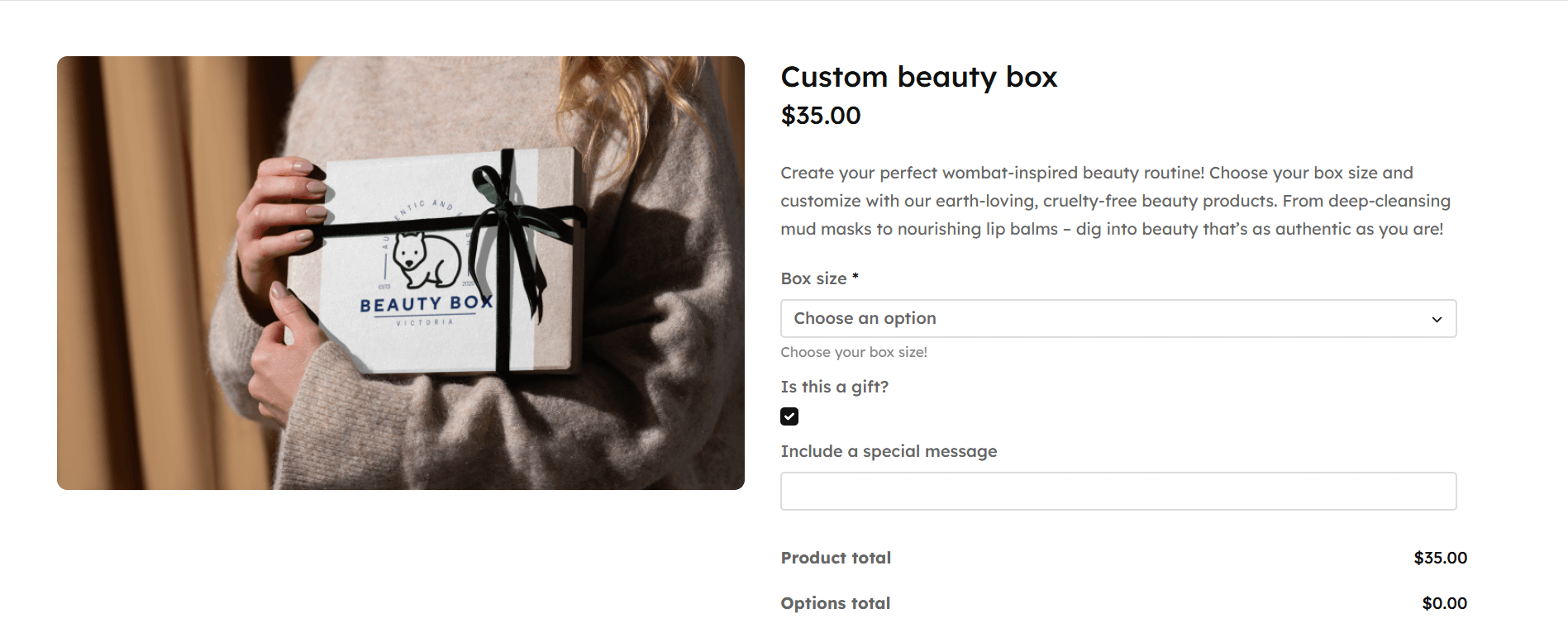
You can add as many conditions as you want using AND/OR operators. You would use “AND” if there are 2 or more tasks that need to be completed first. For instance, only providing the message option if the premium box is picked, and the checkbox is ticked:
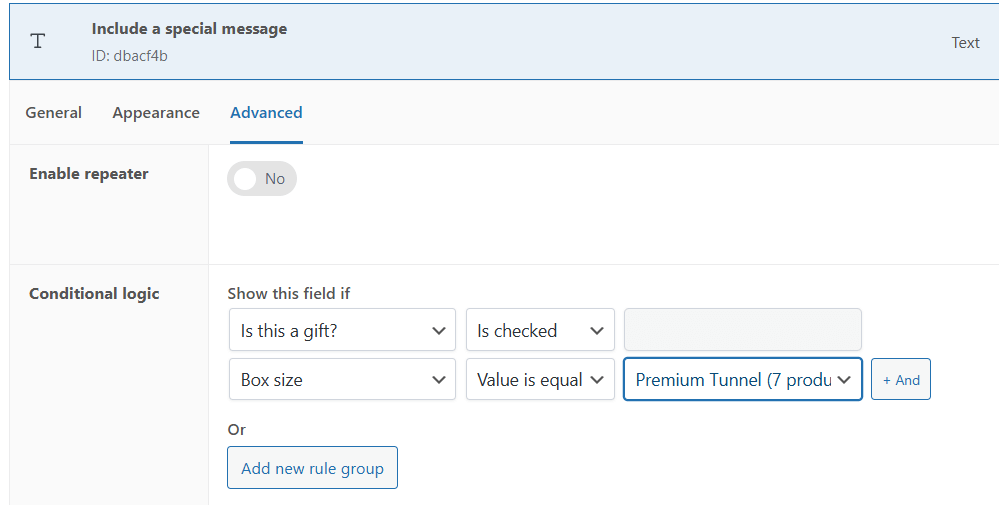
“Or”, on the other hand, allows you to set multiple conditions that will result in another. So, in the example below, the message box is shown when the gift box is checked or when the premium box is selected.
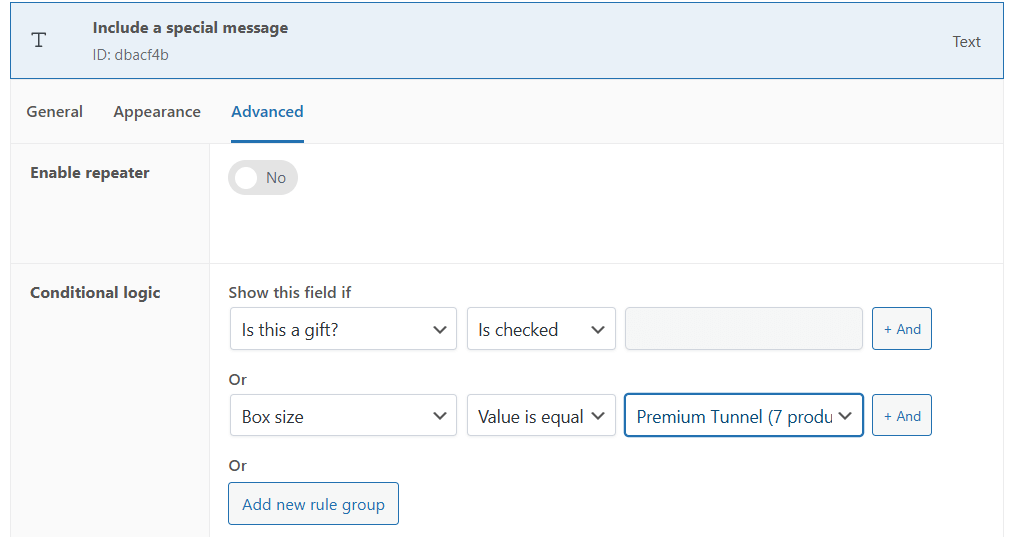
Common scenarios
Progressive disclosure for cleaner interfaces:
Start with basic choices (desktop or laptop), then reveal relevant options. Desktop buyers see tower sizes and cooling options. Laptop buyers see battery and portable cases.
Dynamic pricing based on selections:
Customer selects “Rush Processing”? Show expedited shipping options with calculated fees. Choose “Student Discount”? Display verification field and adjust pricing automatically.
This approach reduces decision fatigue while ensuring customers see every relevant option.
Stop overcomplicating your composite products today
Most store owners make the same mistake of confusing product customization with inventory tracking. They’re completely separate challenges that often get bundled together.
The truth is, most “composite product” needs are actually configuration needs in disguise.
Your pizza builder doesn’t need component inventory. Your gift boxes don’t require complex plugins. Unless you’re selling components separately (like PC parts), you just need smart configuration fields on a single SKU.
Advanced Product Fields solves both scenarios elegantly. The Extended version handles true composite products when you need component-level stock tracking. The same plugin provides 18+ field types for customization without creating database disasters.
Get Advanced Product Fields today and finally build products that work the way you need them to.
